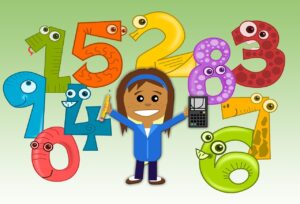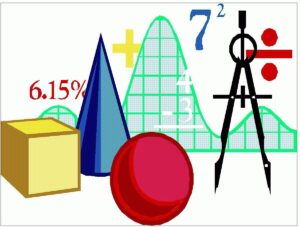We tell you how to teach your child to turn a given into a total quickly and fun. For example, by math magician addition.
Throughout their education, students have to solve problems – in elementary school in math, and then in algebra, geometry, physics, and chemistry. Although the conditions of the problems differ from science to science, the ways of solving them are based on the same logical principles. Understanding how a simple math problem works will help your child develop algorithms for solving problems from other areas of science. That’s why it’s necessary to teach your child to solve problems from the first grade on.
It’s not uncommon for the exact sciences to cause resistance in children. Seeing this, teachers and parents register these children in the “humanities”, which only reinforces the view that the exact sciences – it’s not for them. Math teacher Anna Eckerman believes that math problems are often psychological in nature:
Kids get it into their heads that math is hard. Long, tedious paragraphs in a textbook are hard to follow. The teacher brands the child as a “C” or “F” student. If you don’t tell kids that they’re stupid and they can’t do anything, they can do just about anything.
For a child to be interested in learning math, he must understand how this knowledge will be useful to him, even if he is not going to become a programmer or an engineer.
Math helps us count money every day, without the ability to calculate the perimeter and area it is impossible to make repairs, and the skill of drawing up proportions is indispensable in cooking – use it. Turn everyday matters of everyday life into math problems for your child: let the benefits of math become obvious to him.
Of course, finding applications for irrational numbers or quadratic equations in everyday life is not easy. And if the usefulness of this knowledge raises questions in a teenager, explain to him that with their help we train memory, develop logical thinking and mental acuity – skills that are equally necessary as “technicians” and “humanitarians.
What is the right way to teach a child to solve problems
If a child is just beginning to master the skill of problem solving, teach it to stick to a certain algorithm. Tell him about salutatorian definition.
1. Carefully read the conditions.
It is better to read them out loud and several times. After a child has read the problem, ask him or her questions about the text and make sure it is clear that it is necessary to calculate the number of mushrooms, not cucumbers. Try not to get nervous if the child misses something. Let him figure it out on his own. If the conditions mention realities the child doesn’t know, explain what they are talking about.
Tasks with indirect questions are especially difficult, for example:
“One dinosaur ate 16 trees, which is three less than the second dinosaur ate. How many trees did the second dinosaur eat?” After reading the conditions inattentively, the child will count 16-3 and get the wrong answer, because this problem actually requires addition, not subtraction.
2. Describing the problem
The presentation of data in the form of a diagram, graph or drawing will help in solving some problems. The brighter the image is, the easier it is to comprehend it. A visual record will allow the child not only to quickly understand the conditions of the problem, but also help to see the connection between them. Often the solution plan occurs already at this stage.
The child should clearly understand the meanings of the word formulas and know what mathematical actions correspond to them.
3. Choosing a solution
A visually written down condition should encourage your child to find a solution. If this does not happen, try to ask leading questions, illustrate the problem with the help of surrounding objects or act out a scene. If one way of explaining doesn’t work – think of another. Repeating the same question over and over is ineffective.
over is ineffective.
All, even the most complicated, mathematical problems are reduced to the principle “from two known get the unknown. But to find this pair of numbers it is often necessary to perform several actions, that is to decompose the problem into several simpler ones.
The child needs to know the ways to get the unknown data from two known ones:
summand = sum – summand
Subtractor = subtractor -difference
diminishing factor = subtractor + difference
factor = product ÷ multiplier
divisor = divisible ÷ quotient
divisor = divisor × quotient
Once the plan of action has been found, write down the solution in detail. It should show the entire sequence of steps so that the child can remember the principle and use it later.
After your child has solved enough problems of one type, suggest that he come up with his own problem. This will allow him not only to consolidate the material, but also to show his creativity.